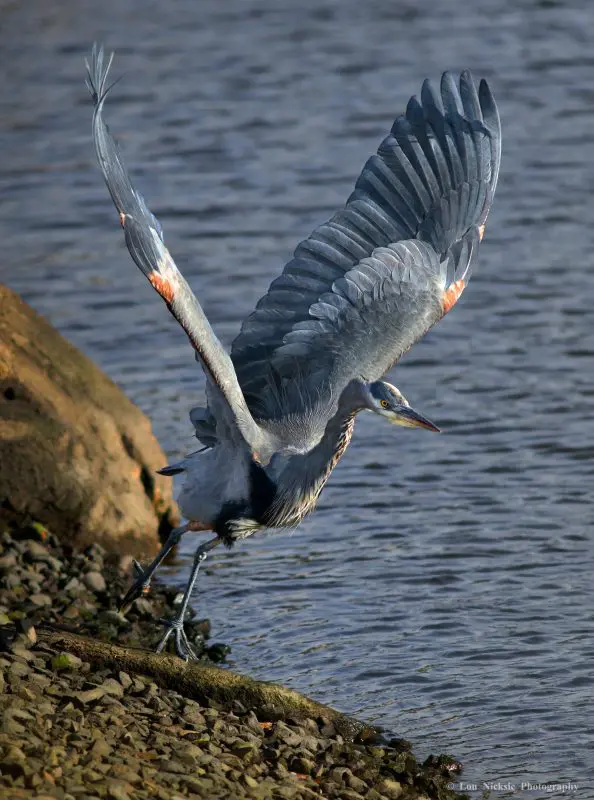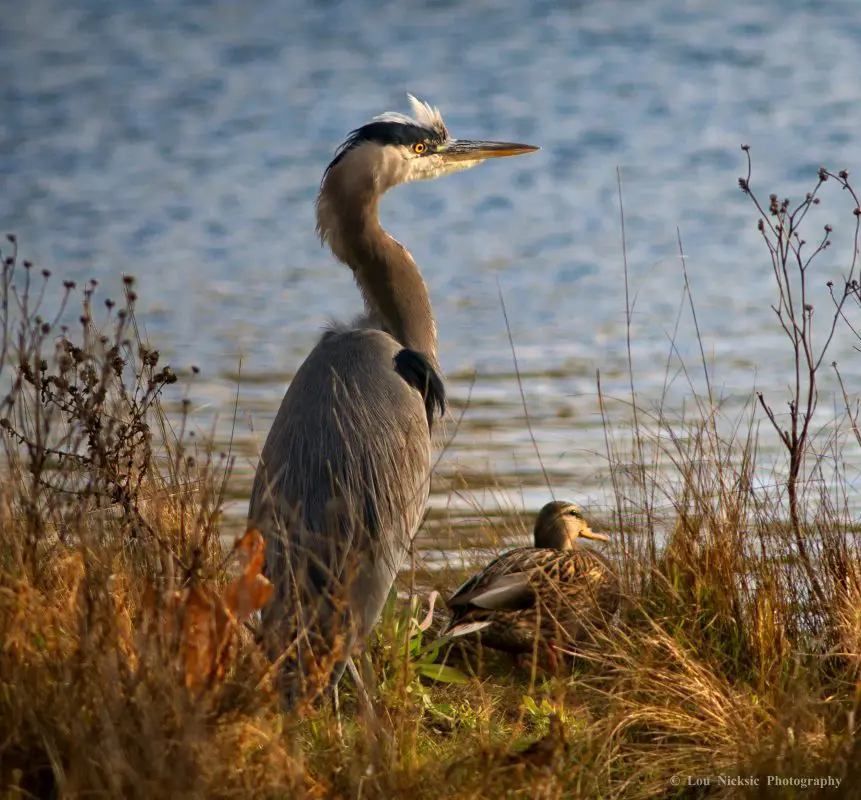Great Blue Herons (Ardea herodias) are frequently seen in Whatcom County, yet their nesting colonies are relatively rare and vulnerable to disturbance. These elegant birds like to frequent shorelines, estuaries, lagoons, marshes, and similar habitats. Great Blue Heron nesting colonies are identified as Priority Area by Washington State.
Post Point Heron Colony
For several decades, the Post Point Heron Colony was the only known Great Blue Heron nesting site in the City of Bellingham. Due to their Priority Species status, the colony is protected under the City’s Critical Areas Ordinance as a Fish and Wildlife Habitat Conservation Area (Bellingham Municipal Code 16.55).

The colony is located on the forested slope between the Post Point Resource Recovery Plant and Shorewood Drive and adjacent to the Post Point Lagoon. The Post Point Heron Colony was first documented in 2000. The colony formed when Great Blue Herons were displaced from a nesting colony along Chuckanut Drive in 1999 and settled at current Post Point site in 2000.
The City recognizes the colony as a unique habitat and has taken a variety of stewardship measures. The City commissioned a management plan for the colony in 2003 and in 2004 the City Council committed to continuing conservation and protection measures for the heron colony on the City’s Post Point property (Resolution 2004-10). The City also funded a 2005 scientific baseline study, 2019 updated management recommendations, and annual monitoring since 2005. In 2022, the City further protected the colony through the purchase of 1.72 acres of colony buffer along Shorewood Drive. Please see below for relevant reports.

The herons typically occupy the site annually between February and August. They utilize a variety of habitats in and around the colony for nesting, roosting, loafing, foraging and staging. Of particular importance are the foraging areas along the Bellingham Bay nearshore. Herons typically forage within three miles of their nesting site and are known to prefer foraging in the eelgrass habitat of protected embayments, such as the Post Point Lagoon. Juvenile and fledging herons are often observed experimenting with foraging techniques in the lagoon’s protected environment. Learn more about the Post Point Lagoon restoration project, heron monitoring, and heron management below.
Herons in Little Squalicum Park
In early 2025, Great Blue Heron nests began to be observed in Little Squalicum Park, just northeast of the City’s Little Squalicum Estuary project completed in 2024. The City is working with a heron biologist to assess the herons’ activities and determine actions to protect the new colony.
Protect Great Blue Herons
Great Blue Heron parents are vulnerable due to the energy it takes to feed and care for their young. Loud noises and unusual activity close to their nests may disturb their nesting activities, sometimes leading to feeding disruptions and abandoning their young. Herons typically utilize habitat for nesting and feeding between January 15 and September 1.
During this time, please follow these guidelines to help protect our local herons:
- Maintain distance of at least 300 feet from herons feeding along the beach or lagoon.
- Use binoculars from a distance for a great way to get a better view.
- Stay on the trail or in open lawn areas at least 200 feet away from the colony. This includes dogs.
- Limit noise and large groups when within and near the heron nesting and feeding areas.
- For Post Point, this area is highlighted in blue in the map below.
- For Little Squalicum Park, this includes the northern trail or lawn area in the park.
- Avoid flying drones, kites, or using kite boards in the heron nesting and feeding areas or within 300 feet of the colony, and in keeping with FAA drone regulations.

Additional Information
- 2019 Post Point Heron Colony Management Recommendations Update (PDF)
- 2012 WDFW Heron Management Guidelines (PDF)
- 2003 Post Point Heron Colony Management Plan (PDF)
- 2004-10 Heron Resolution (PDF)
Resources
- Wildlife Habitat Assessment
- City Restoration Sites Map
- Lake Whatcom Restoration Sites Map
- Washington Conservation Corps (WCC)
- Invasive and Noxious Weeds
- Public Works Contacts
- Habitat Restoration Websites
- Post Point Lagoon Restoration
